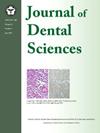口腔软组织诊断作为大流行后时代的一种新的远程牙科框架:系统综述
IF 3.1
3区 医学
Q1 DENTISTRY, ORAL SURGERY & MEDICINE
引用次数: 0
摘要
背景/目的电视牙科已经成为传统医疗的一种很有前途的替代方案。本系统综述旨在评估与传统会诊相比,远程牙科在诊断和管理口腔软组织疾病方面的有效性,探讨临床结果、技术挑战以及对未来研究和政策的影响,以及对数字化先进国家的影响。材料和方法一项在Prospero注册的综述,注册号为CRD42024626432,使用CINAHL、Embase、ProQuest和ScienceDirect数据库,遵循PRISMA 2020指南。入选标准基于人口、干预、比较、结果和研究设计(PICOS),包括纳入和排除标准,重点关注农村人口、口腔软组织状况的远程牙科干预、比较模型和临床结果。使用非随机研究的偏倚风险工具评估偏倚风险。结果纳入14项符合条件的研究。大多数证明提高了口腔软组织病变的诊断准确性、患者满意度和远程牙科支持护理的随访依从性。现代平台诊断是常用的。比较分析表明,远程牙科至少相当于传统的会诊。结论远程牙科治疗是一种经济、简便的口腔软组织疾病治疗方法。将其纳入主流医疗保健可以弥合服务不足地区口腔卫生服务提供方面的差距。本文章由计算机程序翻译,如有差异,请以英文原文为准。
Oral soft tissue diagnosis as a novel teledentistry framework for the post-pandemic era: A systematic review
Background/purpose
Teledentistry has emerged as a promising alternative to conventional care. This systematic review aims to assess the effectiveness of teledentistry in diagnosing and managing oral soft tissue diseases compared to traditional consultations, explores clinical outcomes, technological challenges, and implications for future research and policy, and digitally advanced countries.
Materials and methods
A review registered in Prospero with CRD42024626432 used CINAHL, Embase, ProQuest, and ScienceDirect databases following PRISMA 2020 guidelines. Eligibility was based on population, intervention, comparison, outcome, and study design (PICOS) with inclusion and exclusion criteria, focusing on rural populations, teledentistry interventions for oral soft tissue conditions, comparative models, and clinical outcomes. Bias risk was assessed using the Risk of Bias Tool for Nonrandomized Studies.
Results
Fourteen eligible studies were included. Most demonstrated improved diagnostic accuracy of oral soft tissue lesions, patient satisfaction, and follow-up compliance in teledentistry-supported care. Modern platform diagnostics were commonly used. The comparative analyses showed that teledentistry was at least equivalent to traditional consultations.
Conclusion
Teledentistry shows strong potential as a cost-effective, accessible solution for managing oral soft tissue conditions. Its integration into mainstream healthcare could bridge disparities in oral health service delivery in underserved regions.
求助全文
通过发布文献求助,成功后即可免费获取论文全文。
去求助
来源期刊

Journal of Dental Sciences
医学-牙科与口腔外科
CiteScore
5.10
自引率
14.30%
发文量
348
审稿时长
6 days
期刊介绍:
he Journal of Dental Sciences (JDS), published quarterly, is the official and open access publication of the Association for Dental Sciences of the Republic of China (ADS-ROC). The precedent journal of the JDS is the Chinese Dental Journal (CDJ) which had already been covered by MEDLINE in 1988. As the CDJ continued to prove its importance in the region, the ADS-ROC decided to move to the international community by publishing an English journal. Hence, the birth of the JDS in 2006. The JDS is indexed in the SCI Expanded since 2008. It is also indexed in Scopus, and EMCare, ScienceDirect, SIIC Data Bases.
The topics covered by the JDS include all fields of basic and clinical dentistry. Some manuscripts focusing on the study of certain endemic diseases such as dental caries and periodontal diseases in particular regions of any country as well as oral pre-cancers, oral cancers, and oral submucous fibrosis related to betel nut chewing habit are also considered for publication. Besides, the JDS also publishes articles about the efficacy of a new treatment modality on oral verrucous hyperplasia or early oral squamous cell carcinoma.
 求助内容:
求助内容: 应助结果提醒方式:
应助结果提醒方式:


